Pop Culture
‘A Third Side to the Story’: Rock Duo The Kills on How Photography and Art Add Fresh Dimensions to Their New Album ‘God Games’
The album is the latest to feature Alison Mosshart and Jamie Hince's photography.
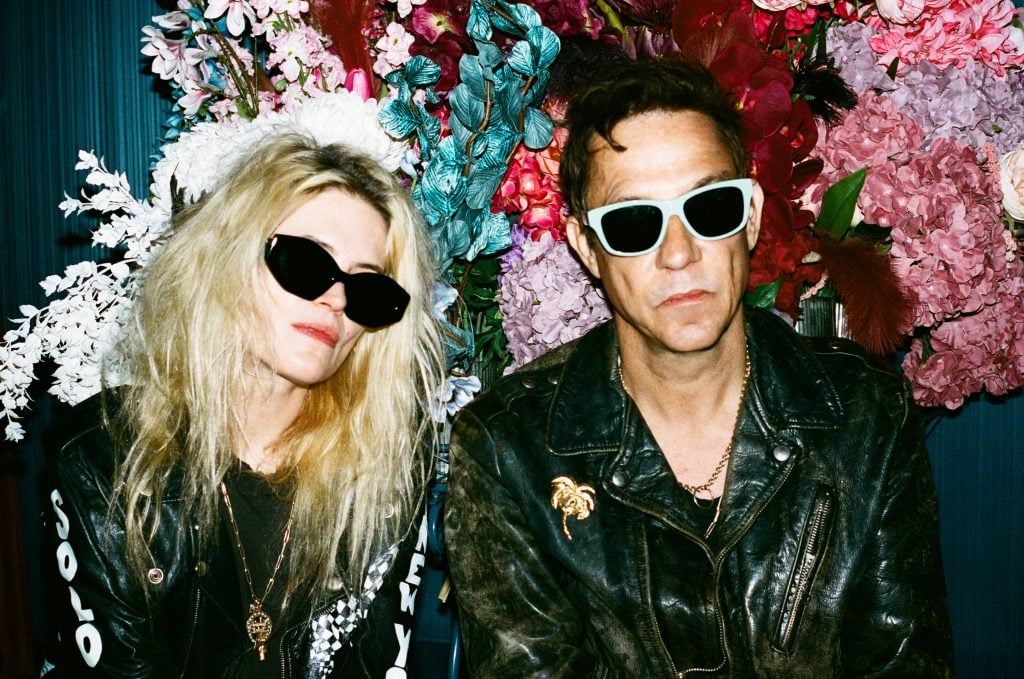
The album is the latest to feature Alison Mosshart and Jamie Hince's photography.

Min Chen

For two decades, indie duo The Kills has been expertly crafting garage rock that’s by turns sultry and swaggering, but always explosive. From “Fried My Little Brains” to “Future Starts Slow,” their tracks are shot through with edgy riffs and the nervy pulse of a drum machine, surfacing a lo-fi yet visceral grittiness. But there’s also always been a noiseless, silent part of the band’s work that plays no less of a vital role in its DNA: photography.
Flipping through the liner notes for The Kills’s new and sixth album, God Games, you’ll encounter pairs of photographs that accompany each set of song lyrics. “Blank,” for one, is coupled with disparate images, one depicting a tangle of utility pole wires, another a clutch of flowers in a hotel room, while the words to lead single “103” run alongside pictures of a grimy fountain floor and a bleak parking lot.
They’re images intended to illustrate each track, shot separately then brought together by members Alison Mosshart and Jamie Hince.
“I thought it would be really interesting, to each submit a photograph for every single song and then put the two photographs together,” Mosshart explained. “It’s like a third side of the story, giving another feeling to the lyrics that are next to it.”
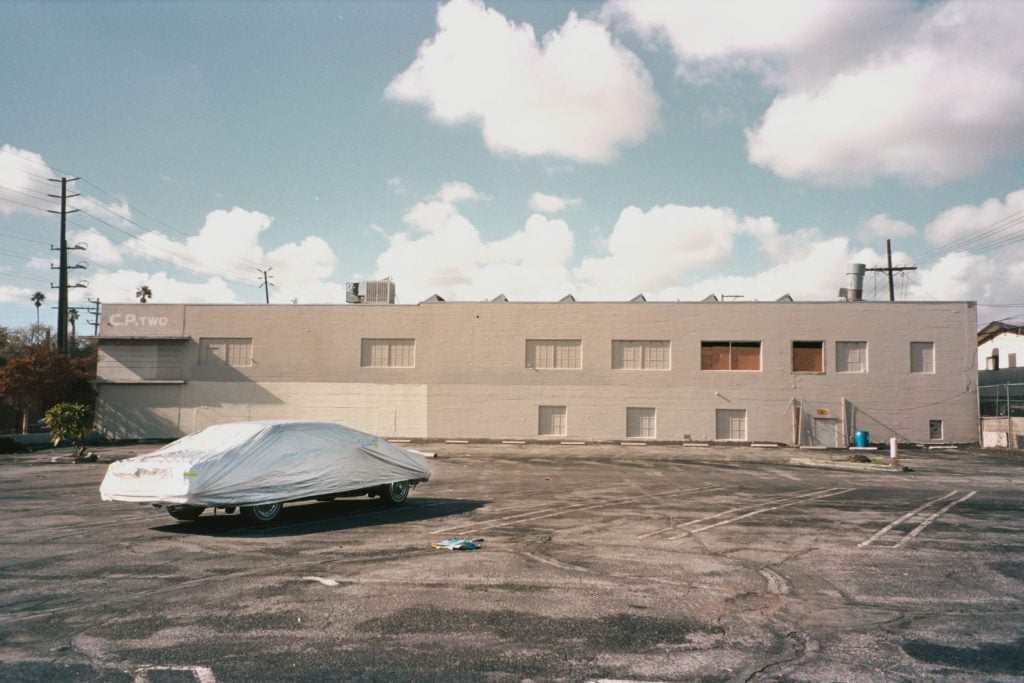
A photograph that accompanies “103” in the artwork for God Games by The Kills. Photo: Jamie Hince.
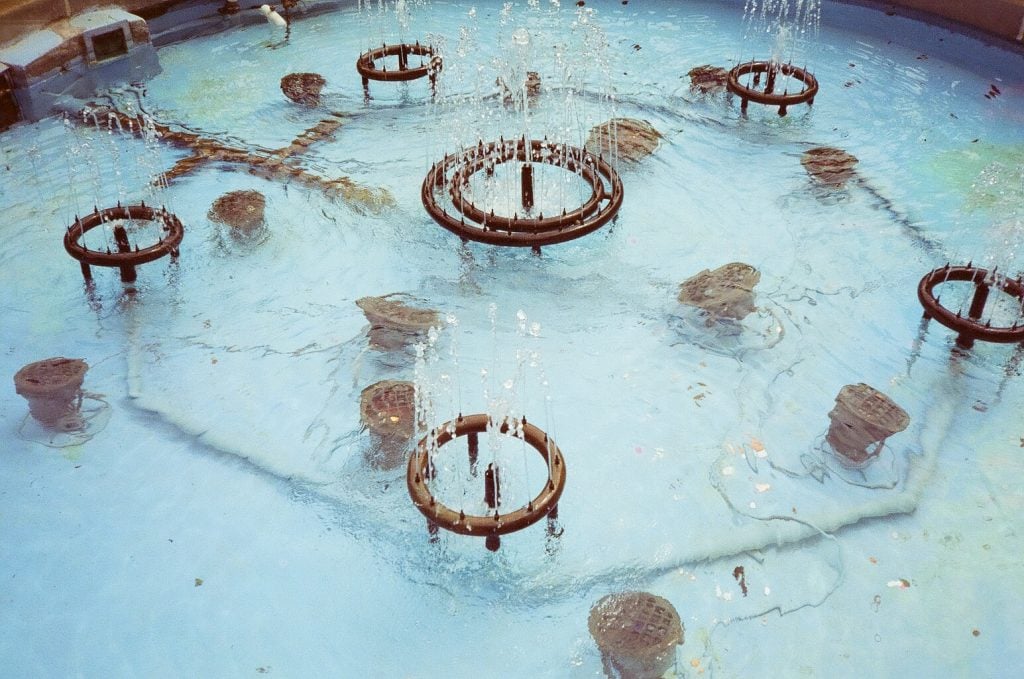
A photograph that accompanies “103” in the artwork for God Games by The Kills. Photo: Alison Mosshart.
While an ostensibly simple idea, the duo relished the project, enthusing over a Zoom conversation about how it brought out their different perspectives.
“When looking at mine, I’ve got a really specific way of framing that I didn’t even know I was doing—so weird,” Hince said. “Alison’s are like how she writes music—explosions. There’s so much energy in them.”
“I love that this is also representative of how we were in the same places, but had slightly different angles, like visions, of the same experiences,” Mosshart added, referring to a pair of photos that she and Hince had obviously shot in the same spot, on the same Halloween night. “You’re getting a piece of my creative eyes and his creative eyes.”
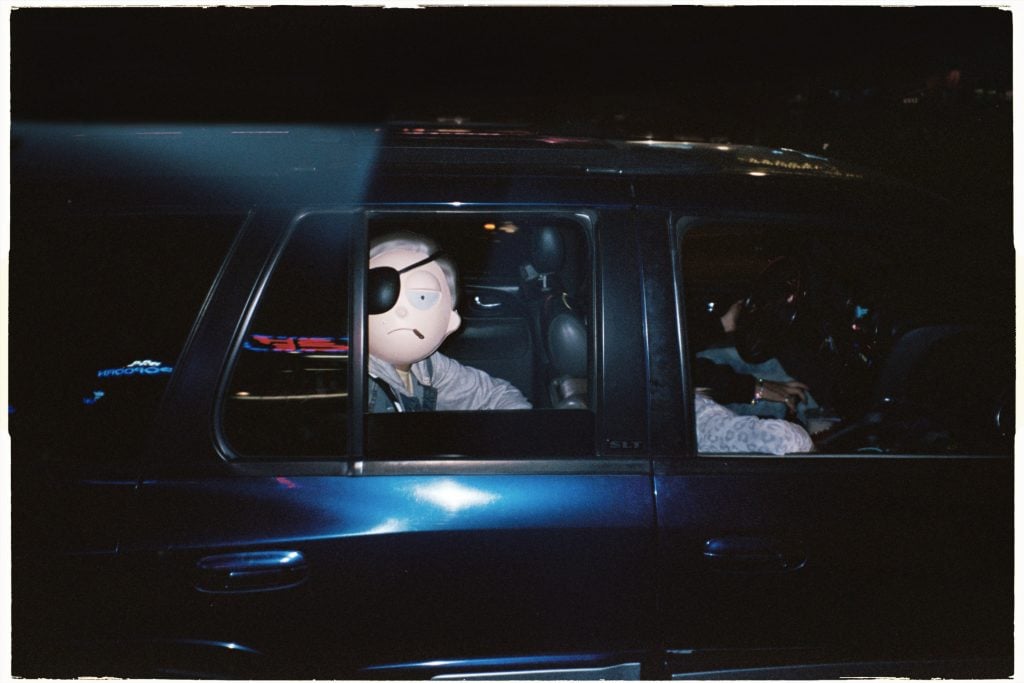
A photograph that accompanies “Wasterpiece” in the artwork for God Games by The Kills. Photo: Jamie Hince.
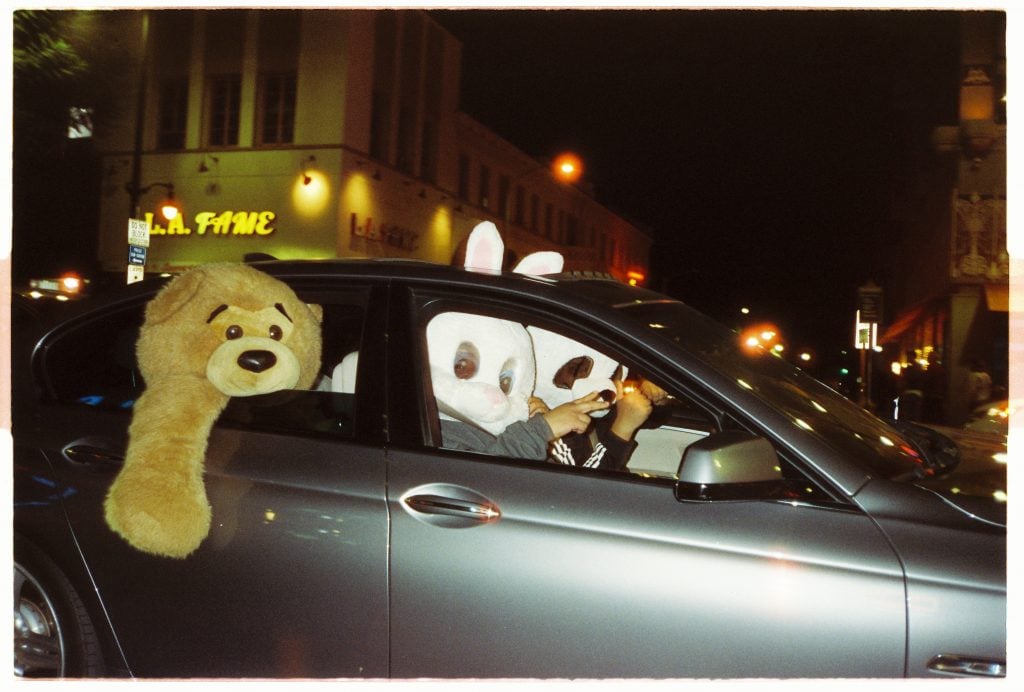
A photograph that accompanies “Wasterpiece” in the artwork for God Games by The Kills. Photo: Alison Mosshart.
Mosshart and Hince have been taking photographs for as long as they’ve been a band. Over the years, they have amassed pictures in the thousands—photo booth shots, Polaroids, images shot with analog cameras. Some of them have been exhibited (most recently by Morrison Hotel Gallery in Los Angeles and New York) and others, more prominently, have been included in the band’s album art.
The sleeves of Keep on Your Mean Side (2003), No Wow (2005), and the 2020 compilation Little Bastards were bedecked with the pair’s photo booth pictures, plus their drawings and handmade collages. Meanwhile, the cover of 2008’s Midnight Boom captured the pair sprawled out in a bed blanketed with art and photographs. They’re testaments to the pair’s admitted—and long-running—obsession with the medium.
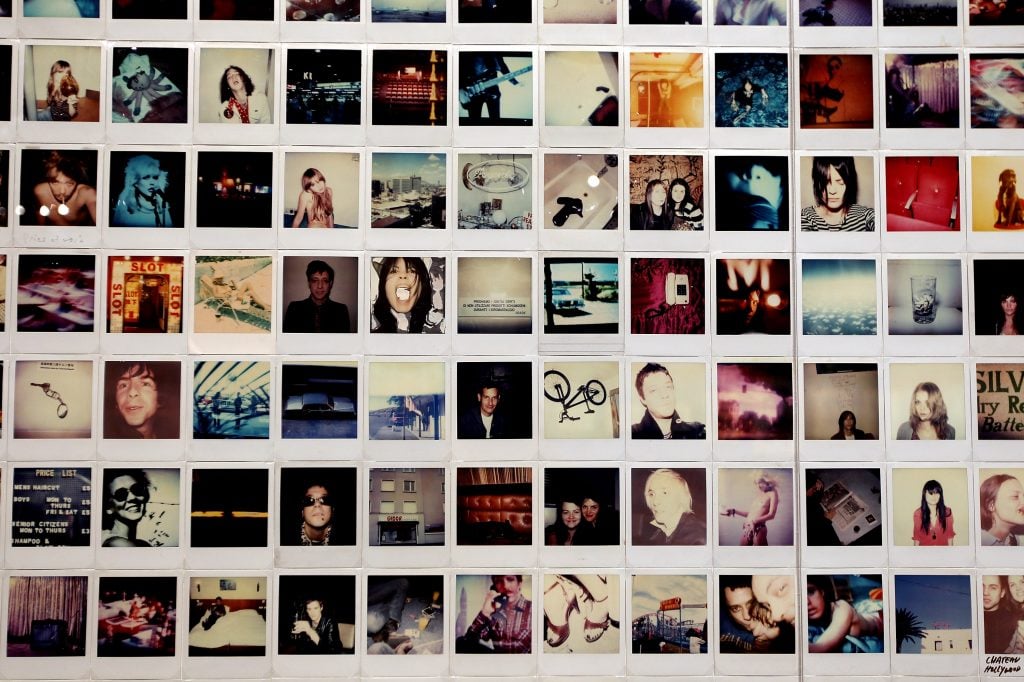
Polaroids by The Kills on view at “It’s Not Only Rock’n’Roll Baby” at Triennale Bovisa in 2010 in Milan, Italy. Photo: Vittorio Zunino Celotto/Getty Images.
Mosshart recalled being a sixth-grader learning how to develop photos in the school’s darkroom—”my happiest time as a teenager.” It was the beginning of a practice, she said, that allowed a shy kid to “express myself without having to say a word.”
Hince, for his part, picked up photography as a way to immortalize the places and experiences he’s had on tour: “I’ve done a lot of painting, drawing, and cut-up art—all that stuff is really hard to do on the road. But it takes one 25th of a second to take a photograph. It’s really conducive to living on a bus and traveling.”
Mosshart and Hince first bonded by mailing their art to each other when they were living on separate continents; they also shared an appreciation for photographers such as Chris Shaw and Nikolay Bakharev. Decades on, they’ve each developed visual art practices—Hince with his Moriyama-esque body of photography, Mosshart with her abstract figurative paintings—alongside their music careers. Fittingly, they continue to deeply consider how each of their records will look and feel.
“It’s often a lot of trial and error,” said Mosshart of the process. “It’s bringing up images and photos we’ve taken, paintings I’ve painted, or things in our notebooks. We start to look at that material because it’s all happening at the same time as the writing.”
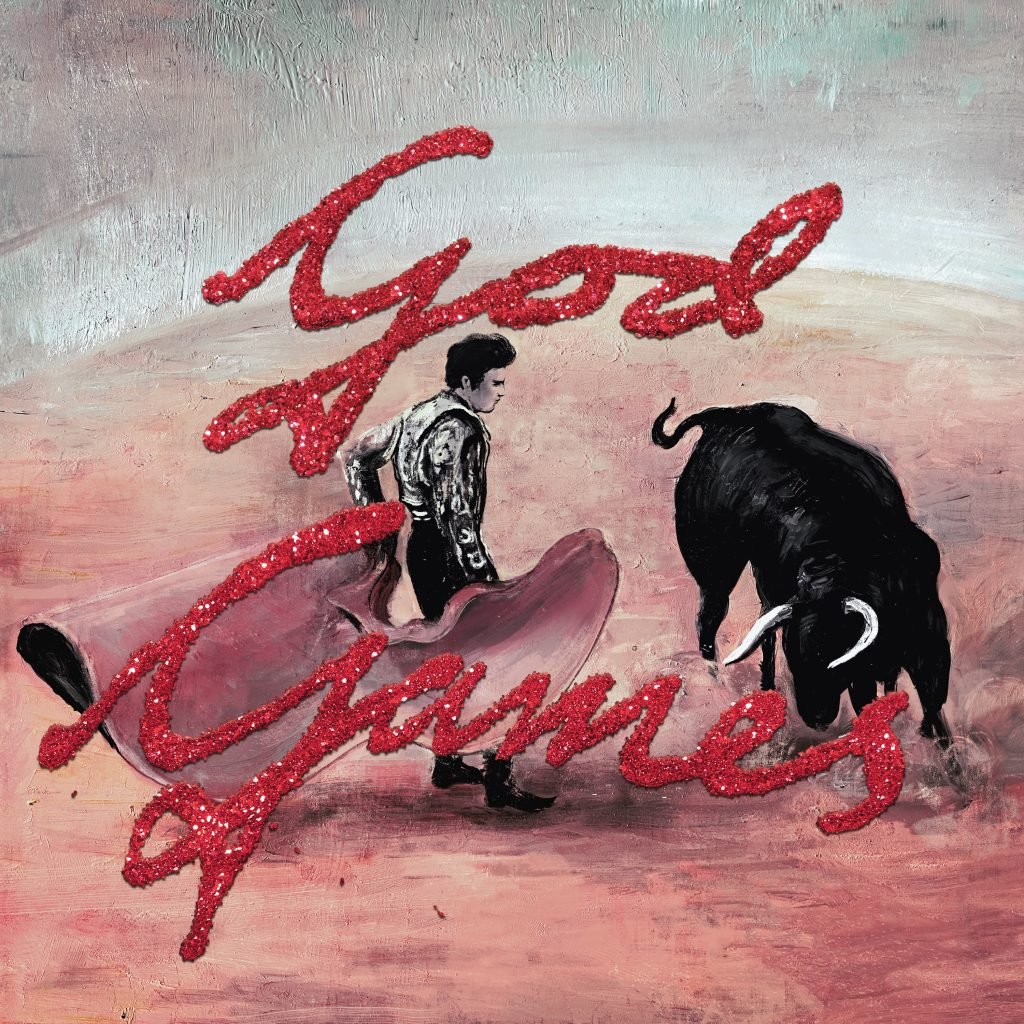
Artwork for God Games by The Kills. Courtesy of Domino Recording Company.
Case in point: the cover of God Games features a recreation of a painting that was left on the mantelpiece when Hince bought his home. The work features a matador squaring up to a bull, his red cape flapping wide behind him—a “common image,” said Mosshart, that her bandmate nonetheless “stared at” for six months while writing the record. For Hince, the artwork, however simple, harbored multiple meanings in line with the album’s title.
“My first reaction wasn’t, ‘Oh my god, it’s a bullfight,'” he said. “On one hand, you can be quite profound and see the image as being a struggle between nature and culture—how man destroys everything, but he has to dress it up in a little embroidered jackets and tight pants. But there’s also the [smaller] struggle of this artist working the shading on the cape. I wanted it to be something that didn’t have one meaning.”
That the painting was recreated by one of Mosshart’s friends—because the band was unable to locate the piece’s original artist to legally clear it for use—only deepened the plot.
“As an artist you want to absorb the times that you’re living in and present them—and this just added another hilarious layer to this. The law was dictating the kind of art we could use as we were trying to get this bad piece of art on our cover,” Hince added.
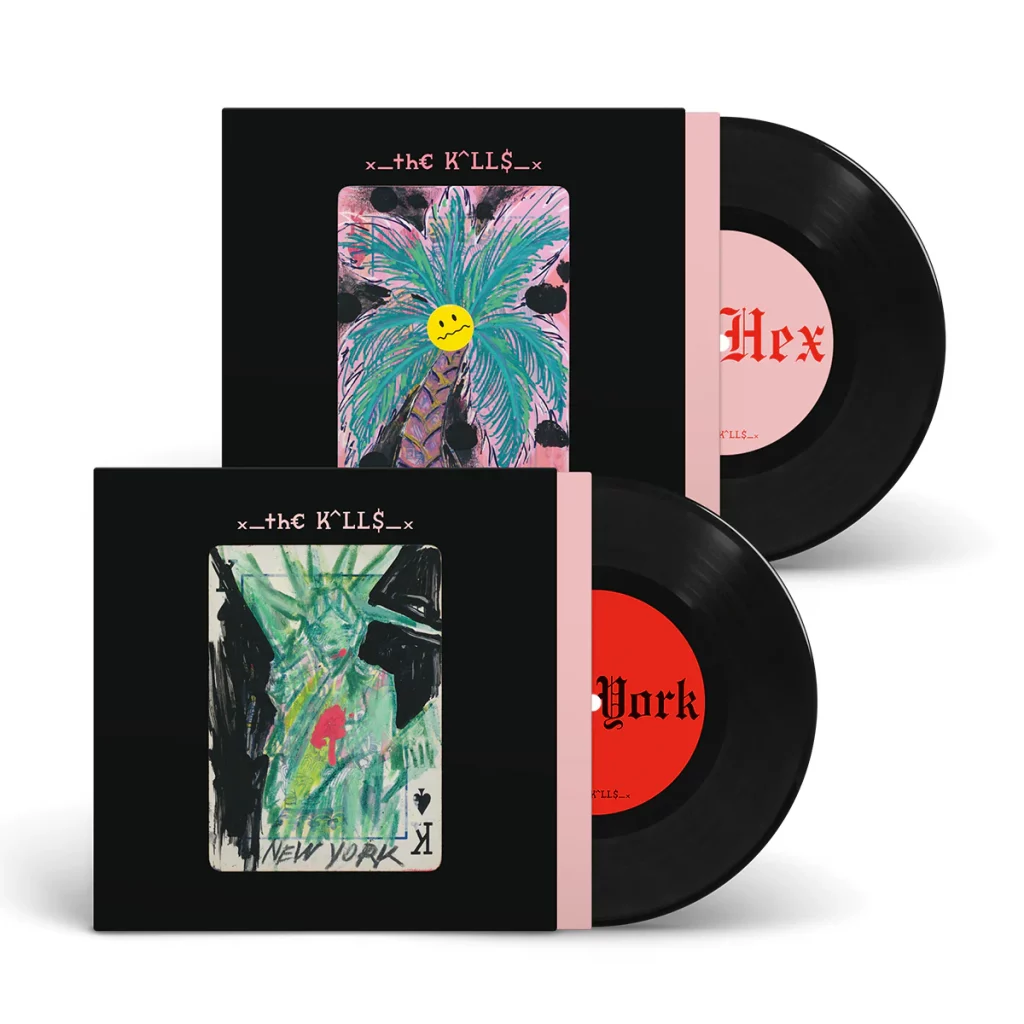
Artwork for The Kills’ double single “LA Hex / New York” by Alison Mosshart. Courtesy of Domino Recording Company.
Mosshart also created paintings on playing cards for each track on the album, two of which appear on the cover for the double single “New York / LA Hex.” It was a harkening back, she said, to her earlier years when she would create artworks for mixtapes she’d made—a way of “trying to put some visual to it.”
And it’s no different to how the band has approached its own records, every inch of which remains pure canvas.
“I think it has to do with identity,” said Mosshart. “It’s another way to display or explain who you are, where you’re coming from.”
“I remember as a teenager, I did go to the record shop and buy a couple of records every week, sometimes on the strength of the artwork. It’s such an expressive way of showing what you’re getting out. Rarely did you get a record home and it didn’t sound like it looked,” Hince said. “The look of a record is a much clearer mission statement of your band than anything you could write down.”
“I don’t know how that always works, but it seems to, you know?” Mosshart added. “Your eyes see it before your ears hear it.”